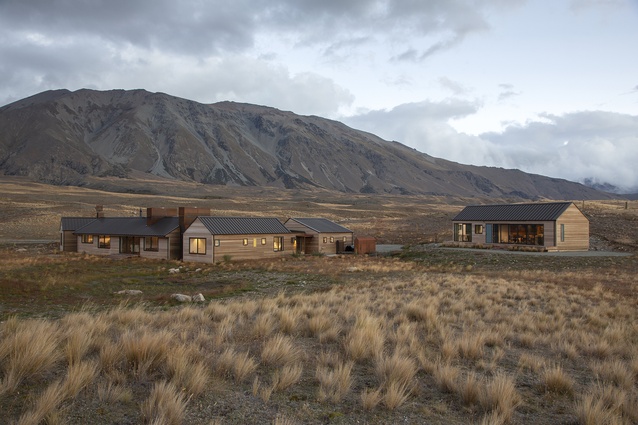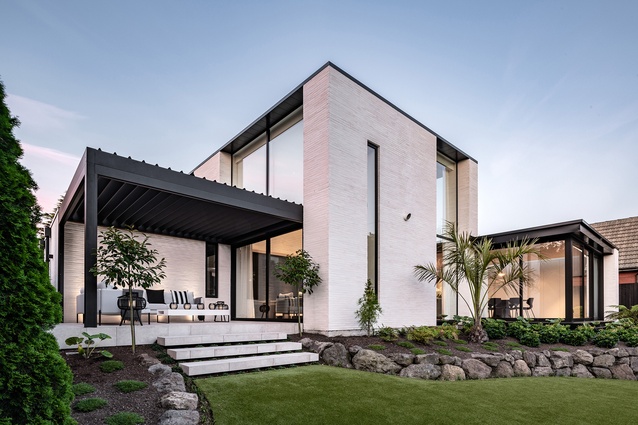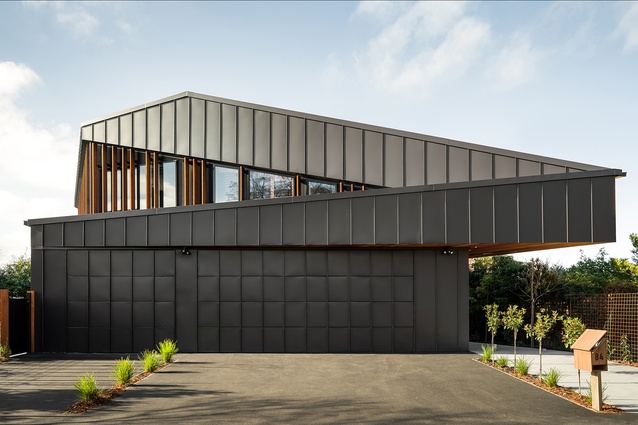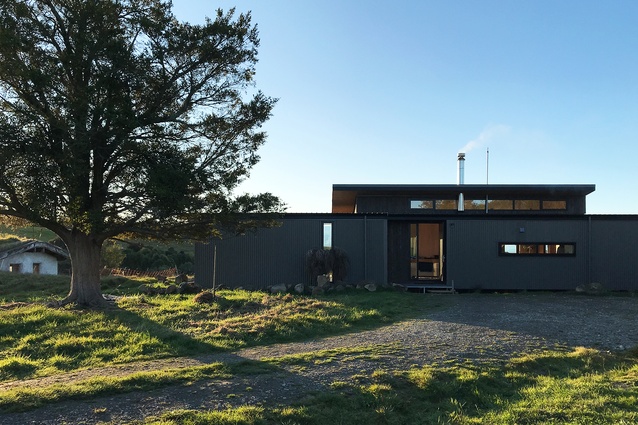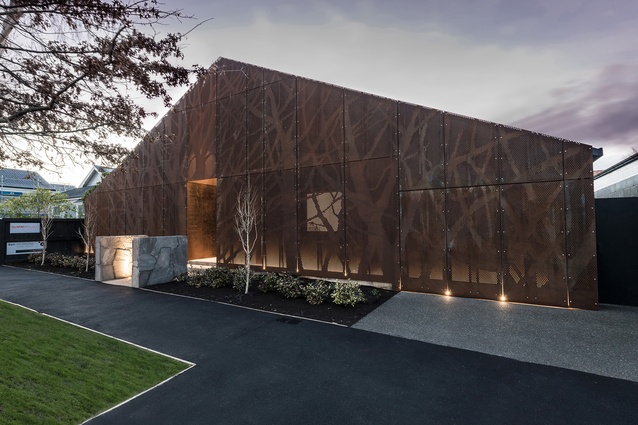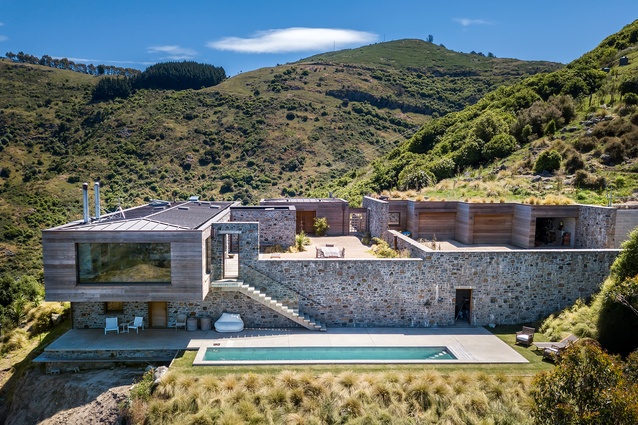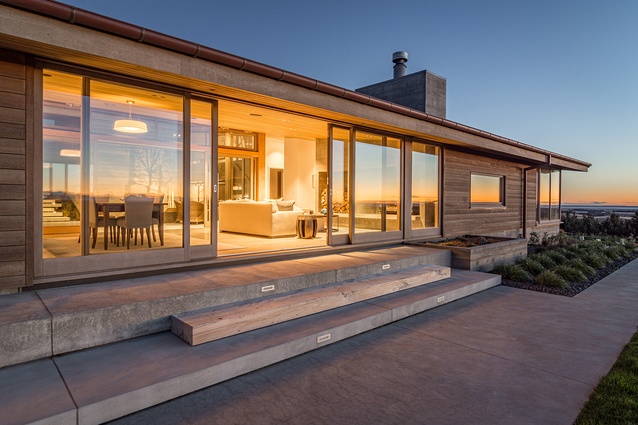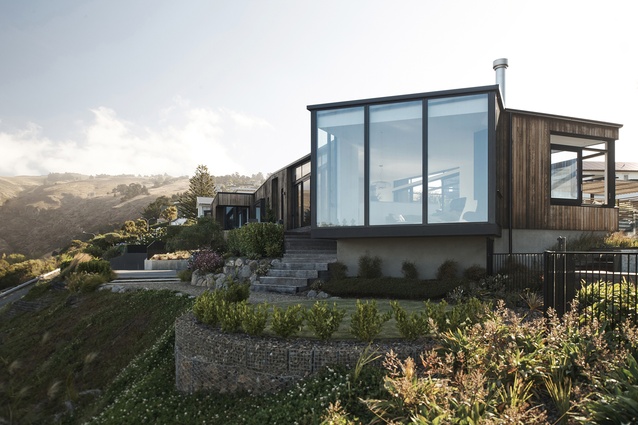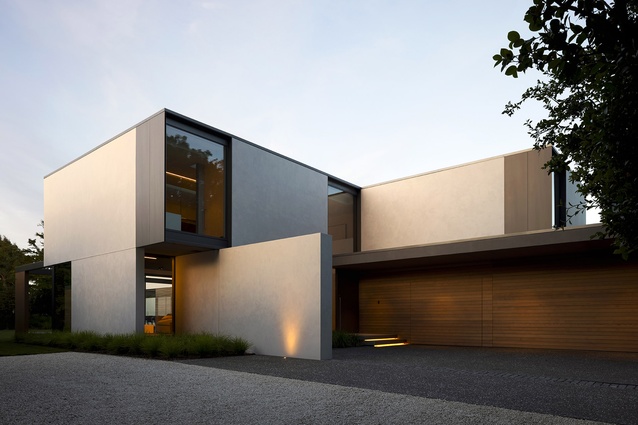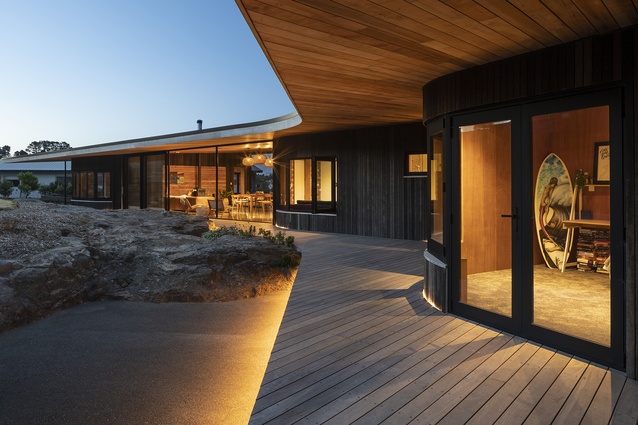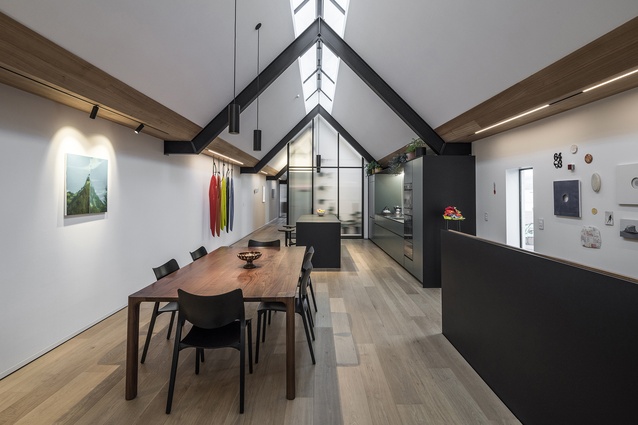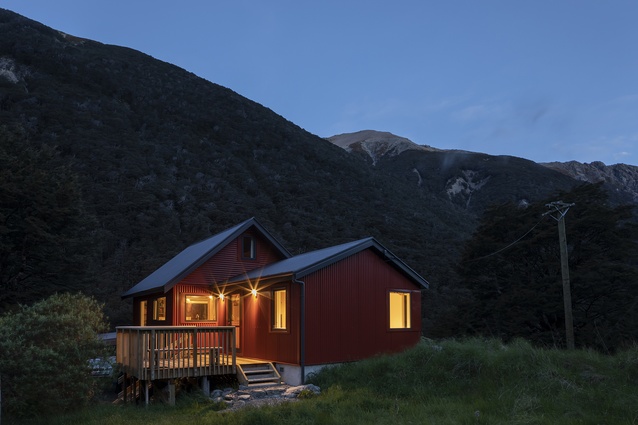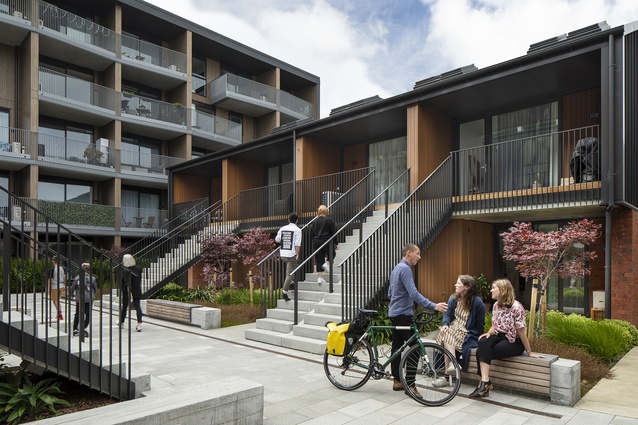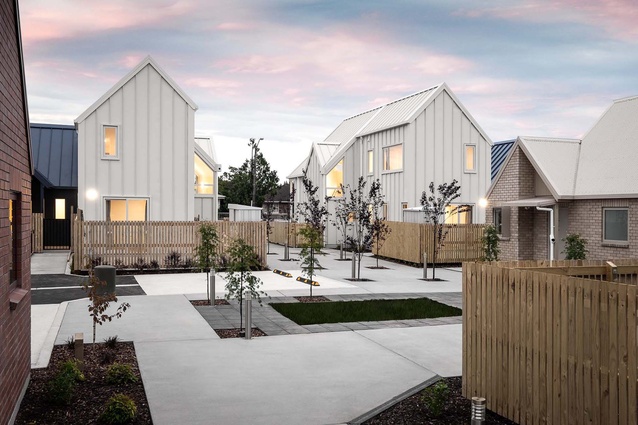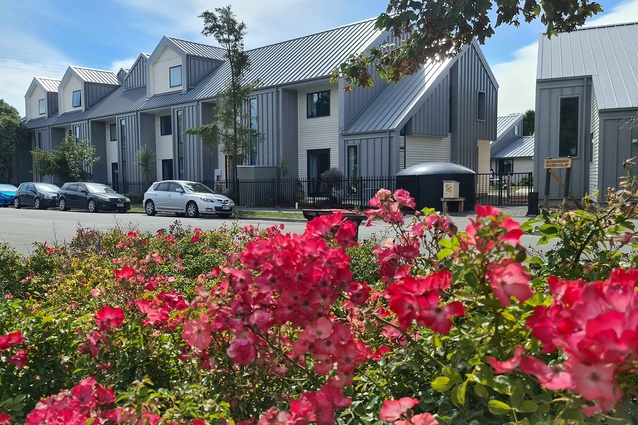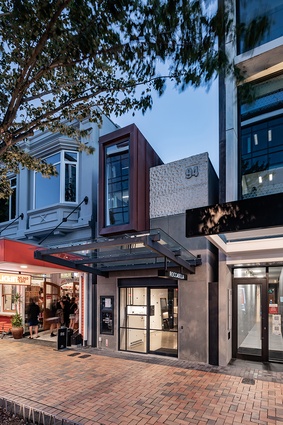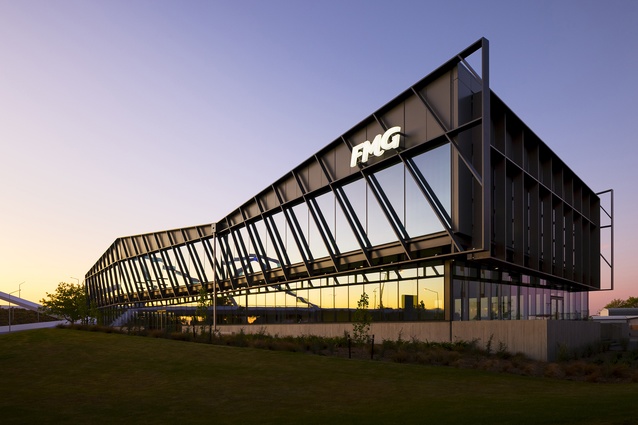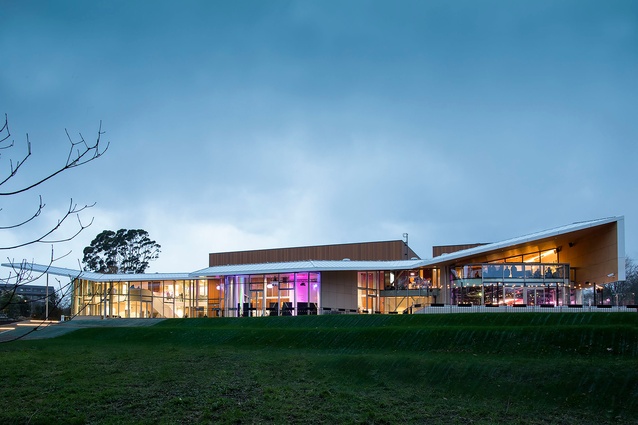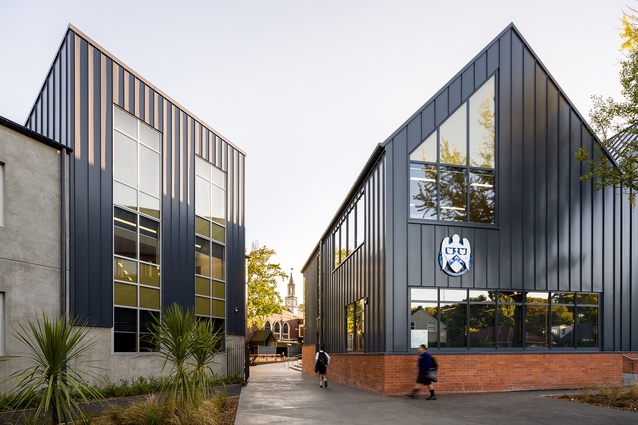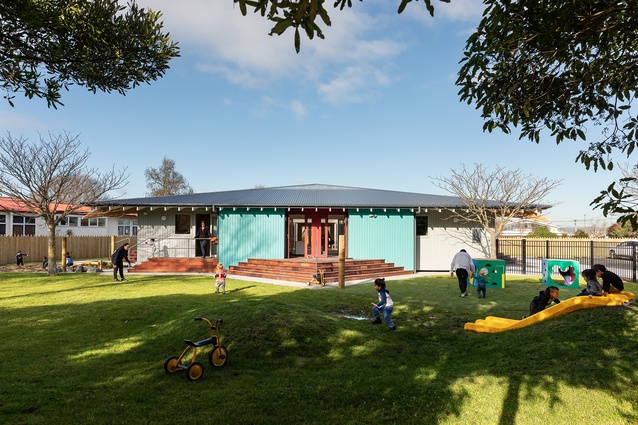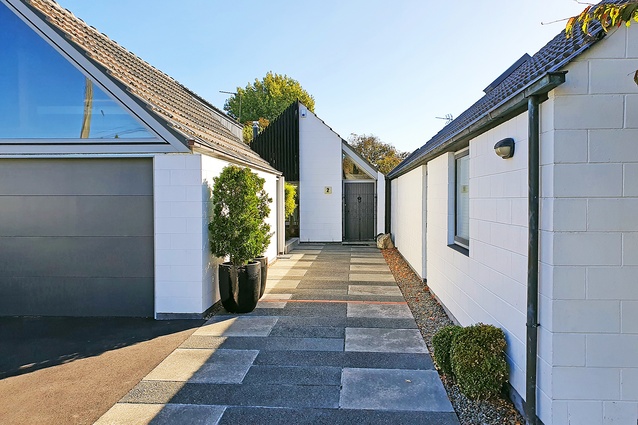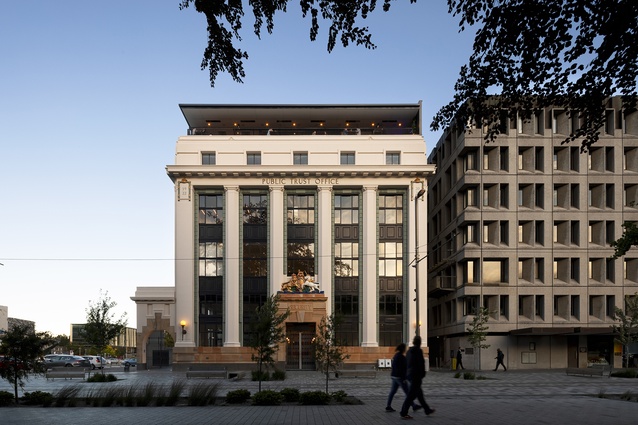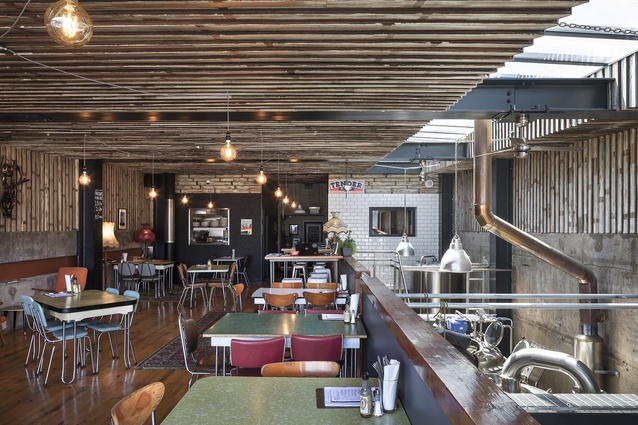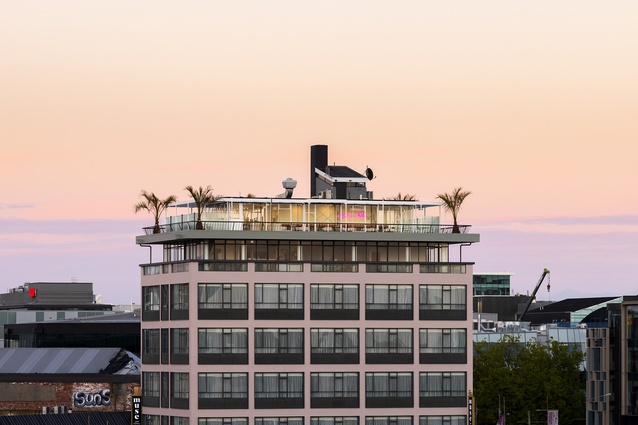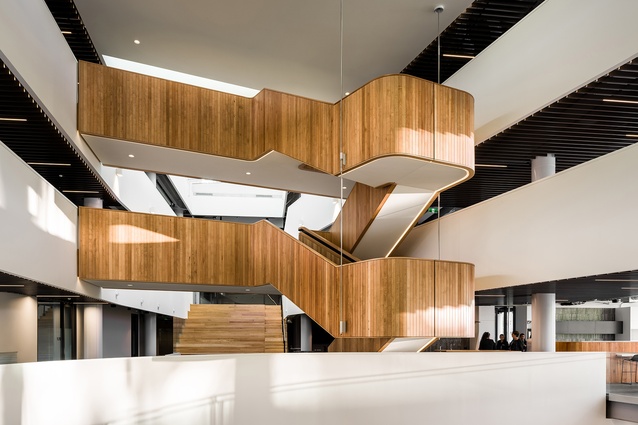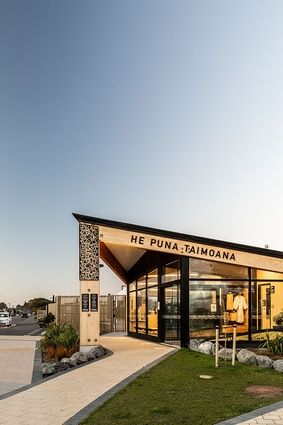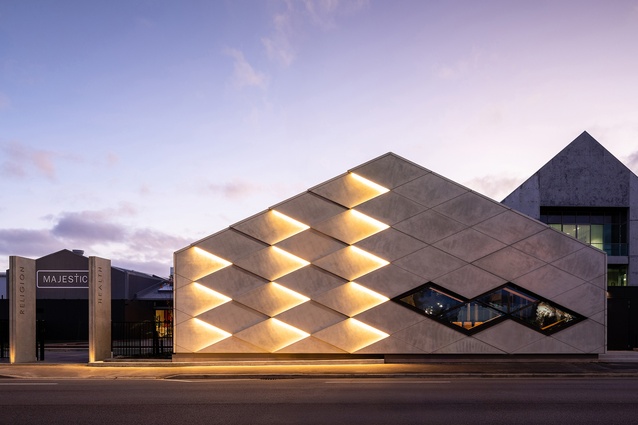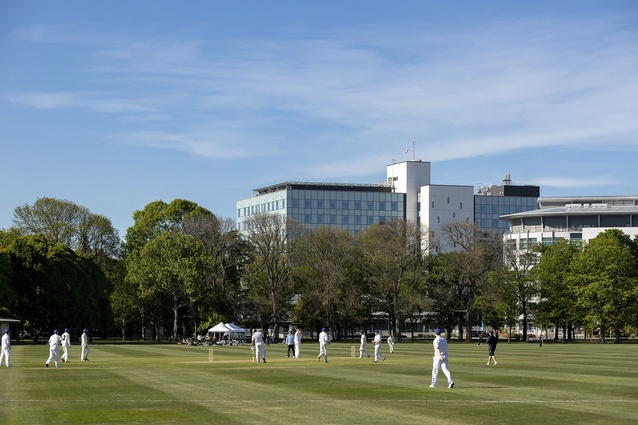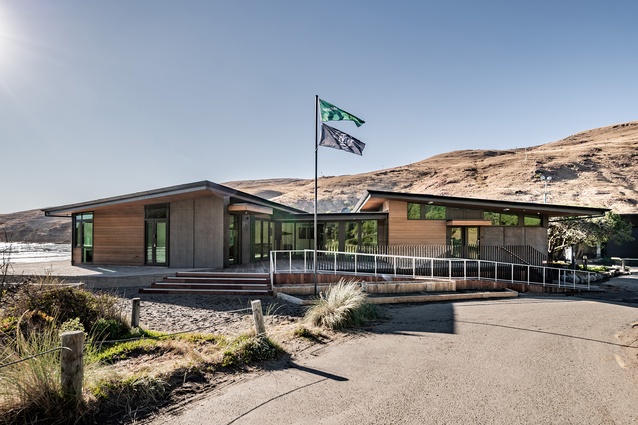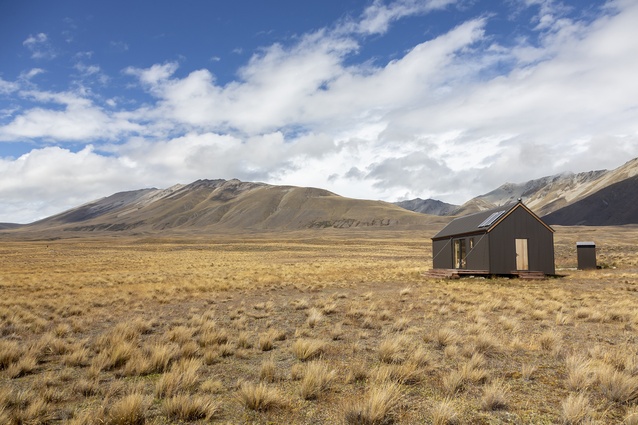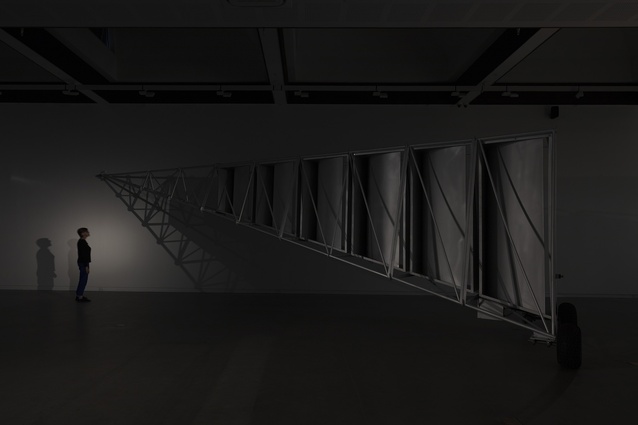Winners revealed: 2021 Canterbury Architecture Awards
Thirty-one Cantabrian projects were honoured in the region’s Te Kāhui Whaihanga New Zealand Institute of Architects Local Architecture Awards. The celebration was held at the refurbished Christchurch Town Hall, where heritage refurbishments, new projects, small spaces and large works alike were celebrated.
This year’s jury was convened by William Fulton of Fulton Ross Team Architects, who was joined by architects Craig Moller, Peter Kent and Biljana Pesun along with lay juror Jenny May. Fulton noted that it was difficult for the judges to narrow down the large number of impressive entries and was delighted at clients “who were both enthusiastic about their projects and complimentary of the relationship forged with their architect”.
See the full list of winners below with jury citations.
Housing
Rock Relocatable by C Nott Architects
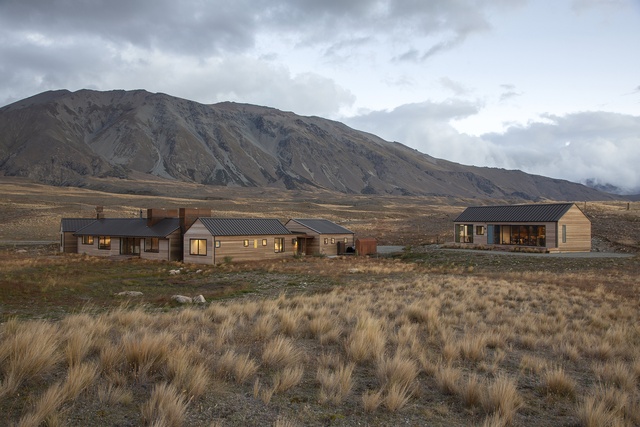
Located in one of the most spectacular high-country alpine settings in New Zealand, this house brings a completely new meaning and aesthetic to the idea of relocatable buildings. Prefabricated in Timaru to combat the remoteness and extreme climate of the site, this series of relocatable timber units was organised in a ‘U’ shape, with glazed connection points and verandas added to create a cloistered effect. This arrangement allows the home to sit sensitively within a shallow basin augmented by a large rock which anchors the dwellings to the land. Despite not being constructed on site, the quality of this home and its close relationship with the landscape make it feel absolutely endemic.
Wai-Iti House by Common
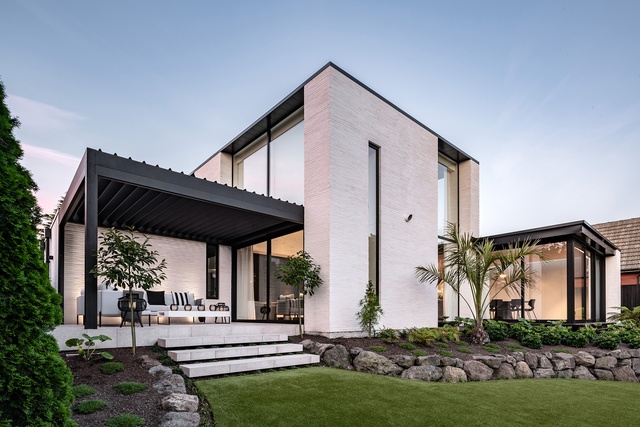
This Fendalton site was subdivided to provide a street-side house for sale, and a house for the owner in the favoured riverside location at the rear. The plan is artfully arranged around a dramatic double-height living room with single-storey wings for dining and a loggia - both overlooking the river. The material palette of generous glazing, black metalwork and cabinetry is enhanced by delicate drapery, and anchored by white bagged Roman brickwork walls and timber flooring, resulting in a luxurious and comfortable home.
Shark House by First Light Studio
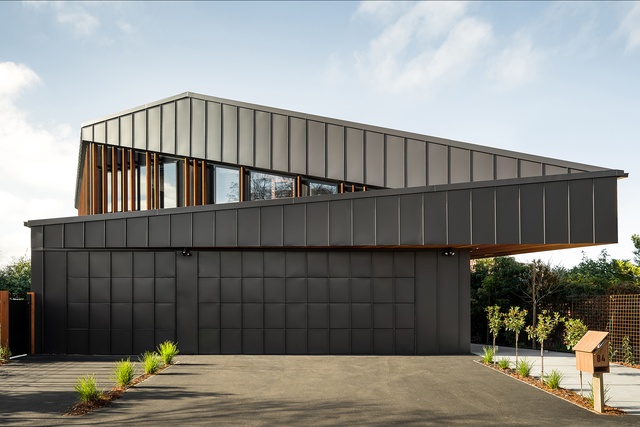
In response to the clients’ brief for a building that was “a defiance to a box”, this home is anything but a box. The design draws inspiration from the client’s infatuation with European supercars – namely the Maserati. Like the car, the sculpted, almost muscular look of the envelope ebbs and flows to translate into dynamic movement. The interior opens into a soft, colourful and inviting decor that both complements and contrasts with the stark and more monochromatic exterior. That dynamism and movement are constant, as interior spaces spill onto a sequence of linked garden zones that are used at different times of the day as the sun circles the house.
Resene Colour Award
The careful use of colour and tonal variety throughout this house make it a joy to inhabit.
Sonnhalde by Makers of Architecture
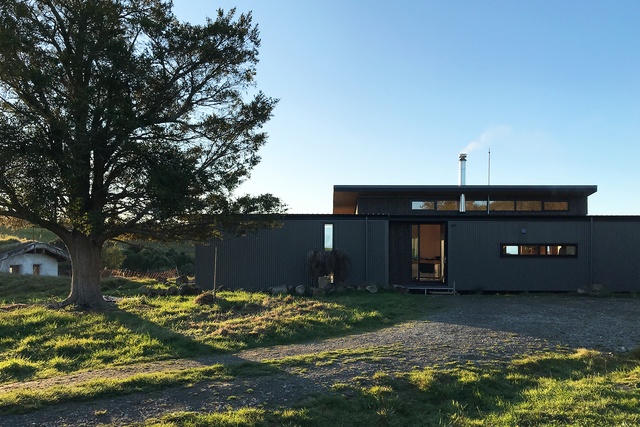
Located in a semi-rural part of Geraldine, Sonnhalde has been carefully designed to rest lightly on the landscape while taking advantage of spectacular views. The brief required a response to the sun throughout the day, and clerestory windows along one elevation provide effective ventilation and natural lighting. The built form utilises a prefabricated CLT structural panel system made using New Zealand-grown Pinus radiata, which forms the entire structural building envelope, and this low-maintenance home is powered by an off-grid solar energy system. Generous glazing provides a well-considered indoor-outdoor relationship and decking ties the house into a unified whole.
Rugby Street House by MAP (2016)
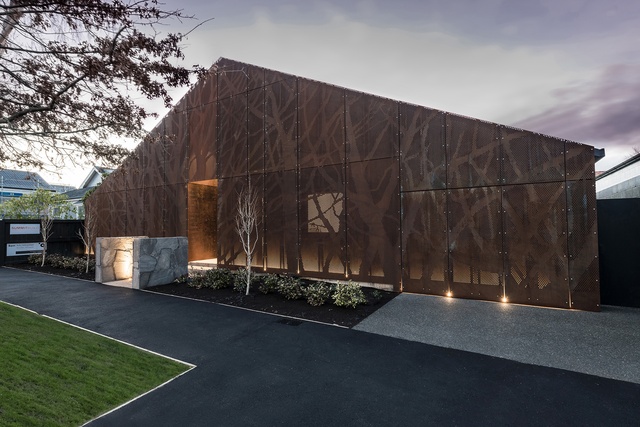
Unique in identity, with the principal facade enhanced by a corten steel sculptural element, this house maintains its suburban street character and scale via a traditional gable form. A series of enclosed yet airy living spaces open to the outdoors, and rooms have been skilfully layered to allow for maximum flexibility while maintaining a sense of cohesion. Material selection was driven by a preference for environmentally friendly materials – tongue-and-groove timber boards line ceilings and walls, and magnesium oxide is used for bracing and cladding behind the rain screen.
Port Hills House by Philip Kennedy Associates Architects
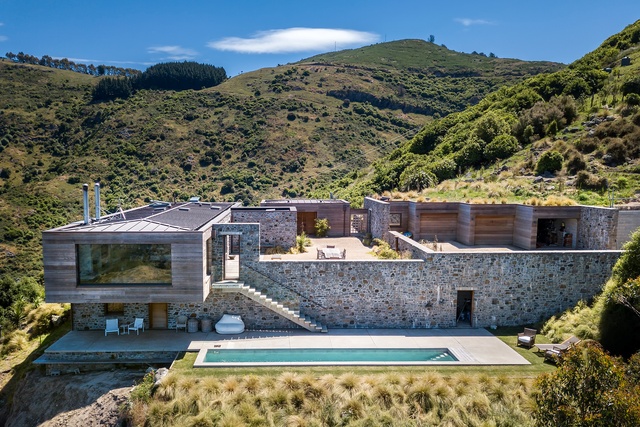
Overlooking Governors Bay, Lyttelton Harbour and beyond, this is an exposed and dramatic site. Cantilevered north and south, the principal structure of the dwelling houses the main living and sleeping quarters. Skilfully placed windows and skylights capture majestic views, while the rugged environment is also expressed in the material selections, both internally and externally. Separate guest quarters frame part of the courtyard entry area, and the house and landscaping seamlessly complement one another. Very little energy is required to maintain a comfortable interior environment due to a well-insulated building envelope.
Tai Tapu House by Rural Workshop Architecture
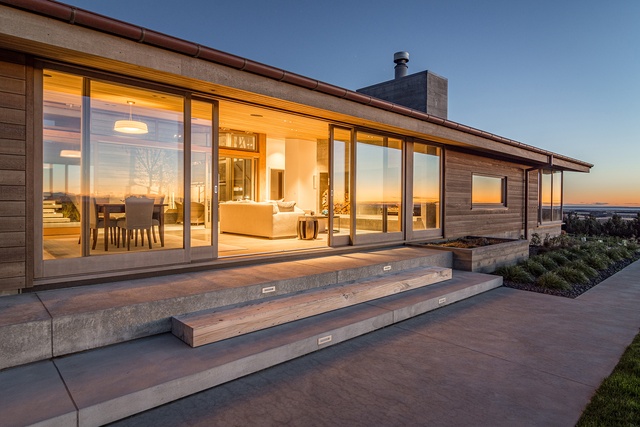
A sense of calm pervades this house, which nestles into a knoll overlooking Tai Tapu and beyond. The careful arrangement of the plan provides a sheltered entry courtyard and a suite of living spaces which enjoy sweeping views. This serene sense of elevation is enhanced by a refined palette of materials such as glazed wooden joinery, boarded timber ceilings, raw concrete elements and polished concrete floors that follow the contours of the land to form a relaxed and cohesive family home.
Moncks Spur House by Sheppard & Rout Architects
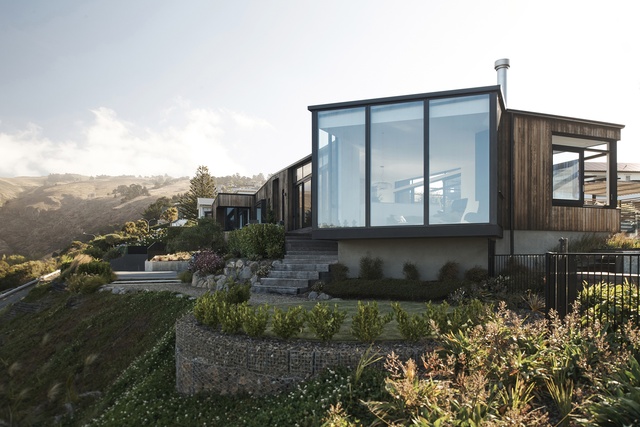
Sensitively located on a ridge of the site, this house shows how a simple L-shaped plan can generate a rich and complex house reminiscent of the developments at Sea Ranch California. The domestic spaces are appropriately scaled and arranged off a central spine, with the living area bay window cranked off the axis to acknowledge a view of the estuary. In an appropriate response to the site, a low-pitched roof and cedar cladding make the house appear to hug the landform, while providing sheltered outdoor living spaces.
Helmores Lane House by Sheppard & Rout Architects
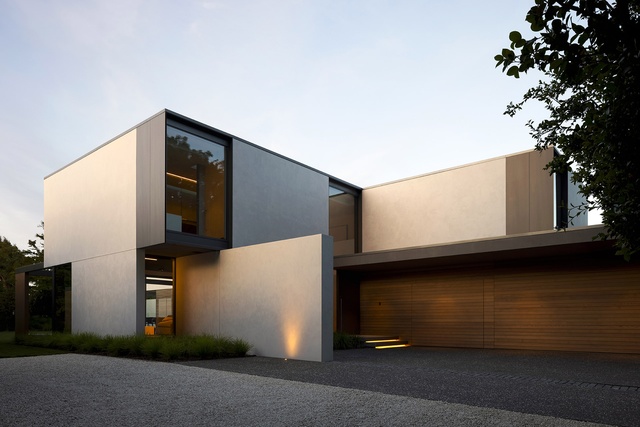
In a garden setting diligently established over several generations, this house has been meticulously planned to embrace the landscape and provide seamless connections between living areas. A double-height living room maintains the garden connection from above and bathes the house in light that enables display of the considered materials and careful detailing. This home is an example of an appropriate response to the Canterbury climate, that also shows off the drama of its landscape to luxurious and joyful advantage.
House on a Rock by South by Southeast
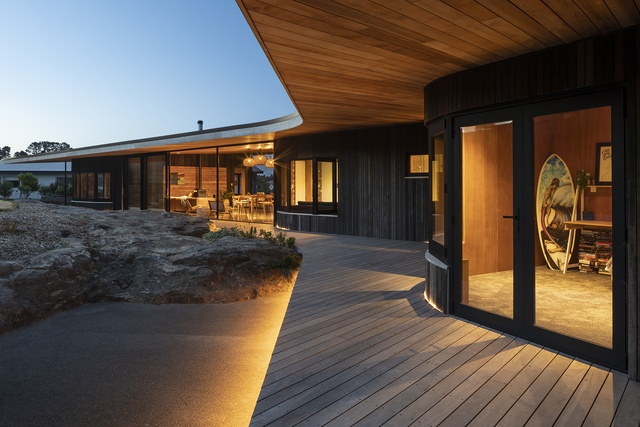
Located on a hill with panoramic ocean views, this family home is comprised of three curved pods that create enclosures for bedrooms, bathrooms and garage spaces, with a large, open living space between. A floating deck wraps around the house, integrating it with an exposed rocky outcrop, and is sheltered by a hovering roof. Recycled brick linings intensify the sense of enclosure in the bedroom pods, while fully glazed walls create an expansive sense of openness of the living area. The generous curves of the building shelter outdoor living areas from prevailing winds.
Housing – Alterations and Additions
Oxford Terrace by Dalman Architects
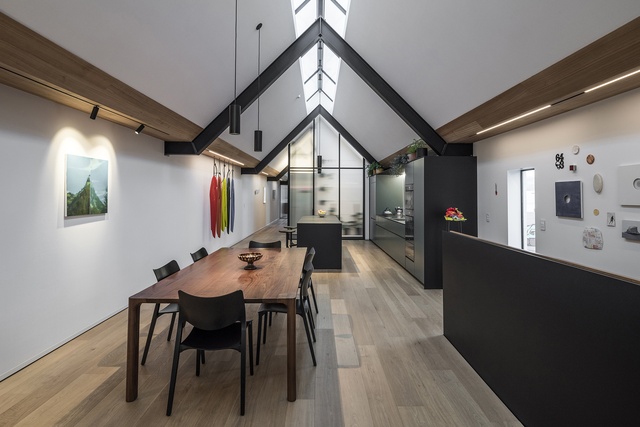
Built in 1979 and designed by Trengrove & Blunt to house their architectural practice, this two-storey, concrete-block, former office building is now an inner-city home. Located opposite Ōtakaro / the Avon River and overlooking the Oi Manawa National Earthquake Memorial, the repurposing of this building is a fine compliment to the original architecture. By locating living areas on the top level and an office, art studio and workshop on the lower, this architect has made the most of Oxford Terrace’s existing gifts. An extension to the rear has provided the amenities of a new garage and a garden terrace.
Resene Colour Award
Careful consideration of the colour palette has created an ideal complement to this minimalist design.
Arthur’s Pass Bach by JHA
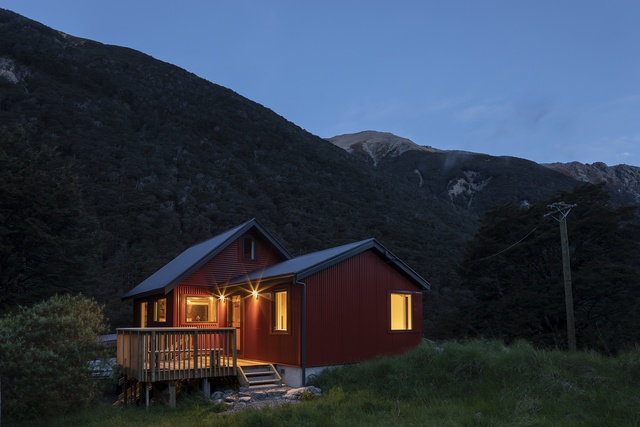
This much-loved family bach was built in the 1950s, partly from recycled materials. The extreme alpine environment and passage of time meant it was in need of repair. The owners took the opportunity to add a bedroom, upgrade the bathroom, and insulate and reclad the original building. The 15-square-metre addition connects easily to the original gabled form and new Coloursteel cladding complements the neighbouring alpine huts. Detailing responds to the harsh Arthur’s Pass environment, and the living space has retained its original sense of the warmth and shelter of a Kiwi bach.
Resene Colour Award
Colour has been used to ensure this Arthur’s Pass Bach relates to its community environment while affording it a degree of individuality.
Housing – Multi Unit
One Central – Bedford Apartments & Bedford Terraces by Architectus
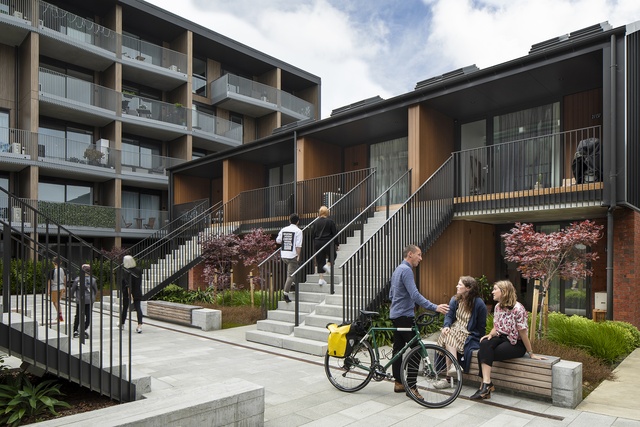
Utilising a clever overall planning strategy, this project balances a mix of apartment types and townhouse typologies. The masterstroke is pushing resident carparks over to one side and allowing central spaces to be dominated by pedestrians, with a mix of courtyards and laneways connecting into a larger framework. Housing types range from one to three bedrooms, and all have ample access to daylight and views, a strategy that encourages interaction between the residents and passersby. Materials are robust, with a mix of metal cladding and brick veneer appropriate to the site and its urban context.
Kāinga Ora – High and White streets development by Rohan Collett Architects
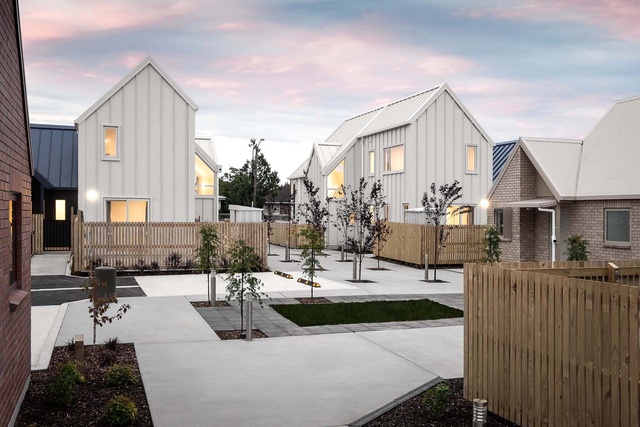
This development challenges preconceptions around what state housing might look like, and the architect has successfully avoided design outcomes often associated with lower-cost housing. By considering and adopting the idea that “scarcity is a tool”, these 28 warm, modern, light-filled units provide a haven for single tenants. Open areas between the units, with carefully considered and integrated landscaping, create enhanced opportunities for social interaction and a higher quality urban environment.
Resene Colour Award
The considered selection of materials and colours integrates with the landscaping to provide the feeling of a warm community environment.
Peterborough Co-Housing by South Architects
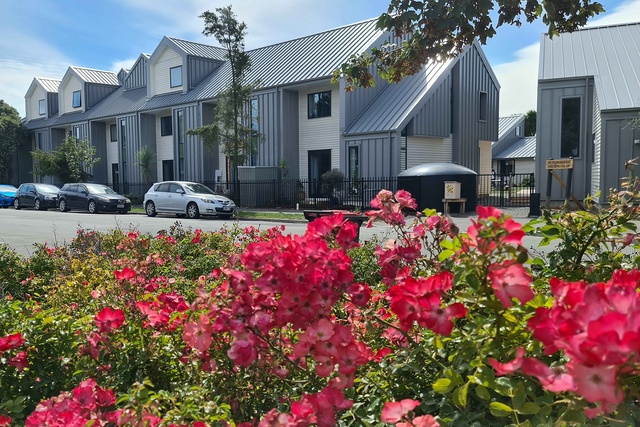
The Peterborough Housing Co-operative was founded in 1980. Following the earthquakes, the houses were demolished, and 14 units were constructed in two rows facing each other to provide an area of small gardens and shared ground. A common house with kitchen, dining and meeting facilities, and laundry blocks at either end, fosters social interaction. Cars have been kept to the perimeter, and the resulting shared ground provides a sunny and safe place to play and meet. The northern row of houses are designed to ensure the admission of sunlight, while multi-storied houses to the south shield the common space from noise and wind. The familiar domestic language of cream weatherboards, grey steel and unpainted timber creates a unified feel at this rejuvenated community.
Commercial
94 Cashel Mall by Dalman Architects

Acknowledging the past with a nod to Scarpa, this long, narrow building is a reminder of the scale and grain of pre-earthquake Christchurch. With the building having occupied its site for over a century, the owners were determined to rebuild their single-volume retail space, but needed to create the illusion of a second level to satisfy council directives. Clever massing of the Cashel Street façade with concrete, copper and glass achieves this, and also creates a strikingly crafted presence on Cashel Mall. Inside, a tall, oriel bay window draws light deep into the long floor plan and through high, notched steel portals that form the cross section. This is a lovingly crafted building that is true to itself, but looks to the future with a southern facade that admits further development possibilities.
FMG Office Building by Sheppard & Rout Architects
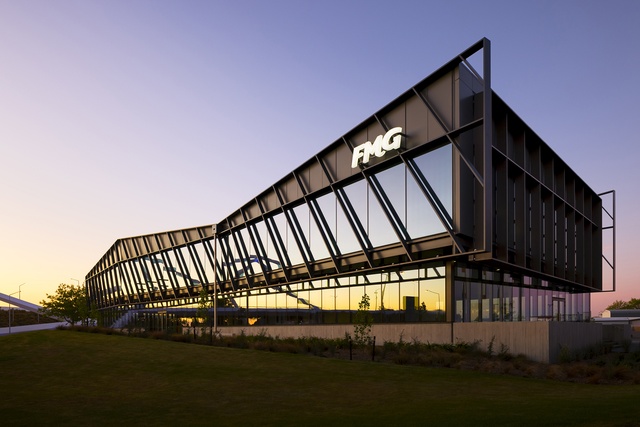
The FMG building forms part of the gateway to Christchurch Airport and engages dynamically with this context. Its form mimics both the surrounding landscape and the forms of aircraft, with an external steel frame that speaks to the momentum associated with take-off and arrival. Inside, a long plan allows daylight into the full depth of the offices, with services and access to the west helping to reduce heat gain. Fritted glass allows views from sitting height, while excluding unwanted solar exposure. While it resides comfortably and harmoniously within the wider context of the Agri-Business campus, this building also looks as if it might be about to take flight.
Education
Haere-roa by Architectus
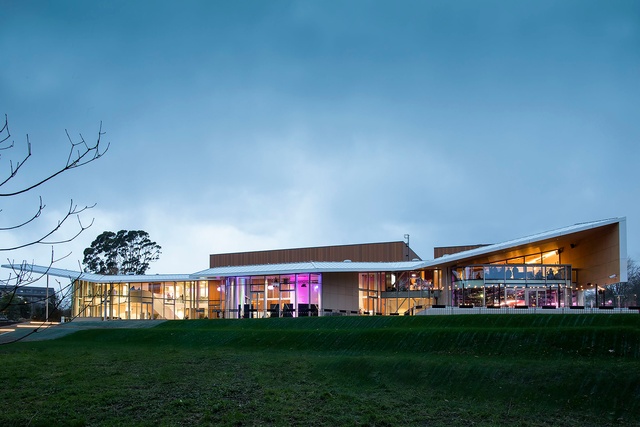
As the replacement for a well-known university landmark, this building is well up to the task of providing space for student amenities, activities, and performances, as well as offices for the Student Union. A range of spaces that open onto outdoor gathering and performance areas embrace the wider context of the site. The building is anchored by a multi-purpose black box performance space that is cleverly concealed by smaller scale elements and a series of angled roofs that relate to a nearby stream. Simple materials are well executed and carefully detailed with a fit-for-purpose robustness.
CBHS Caddick Caldwell Block by Athfield Architects
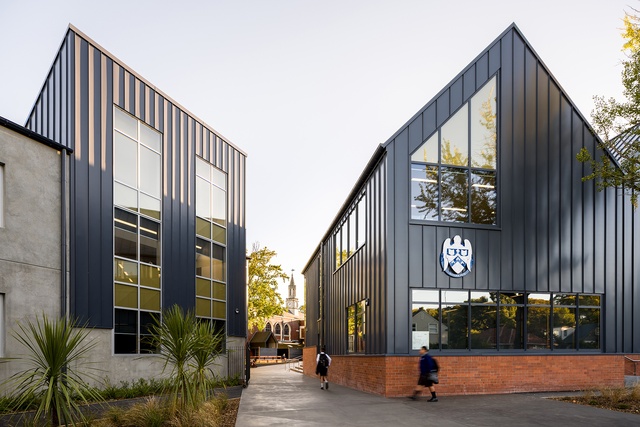
As much a masterplan intervention as a series of buildings, this project is cleverly woven into the existing fabric of Christchurch Boys’ High School, and creates a series of courtyard spaces along with new approach and entry points. The buildings are robustly detailed with materials that reference the colours of the existing built environment, while providing an interplay between the new and the old. Internal spaces are handsomely proportioned with plenty of daylight and colour to enliven the teaching areas. This is a successful integration and a lesson in marrying the new and the old, while maintaining a clear distinction between the two.
Te Hohepa Kōhanga Reo by Bull O’Sullivan Architecture
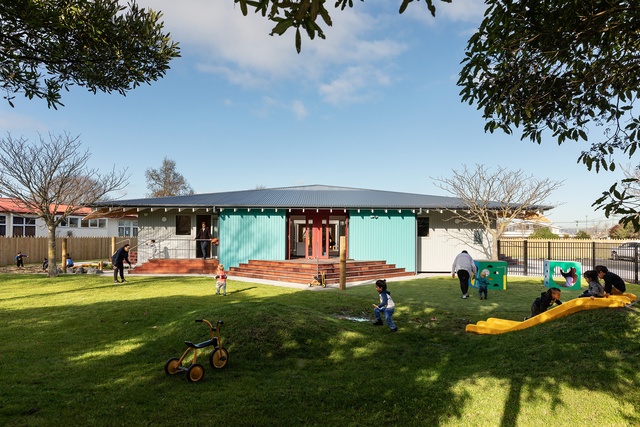
This gem of a building, which replaces a cold old classroom, is a ray of sunshine for this well-established community. A new star-shaped plan provides a clear progression for students, beginning with the rising sun for newborns and ending in the west for six-year-olds. A covered courtyard space in the warm heart of the building provides shelter and light, even on the greyest winter day. Each learning space has a special relationship to te rā, the sun, and colour is used extensively and unsparingly to express the tikanga and stories of the school. The project is appropriately scaled for even the smallest users, who can move freely into a range of enriching outdoor spaces.
Resene Colour Award
Clever and playful use of colour in this building perfectly complements its architectural form.
Enduring Architecture
Schneideman House by Warren and Mahoney Architects (1966)
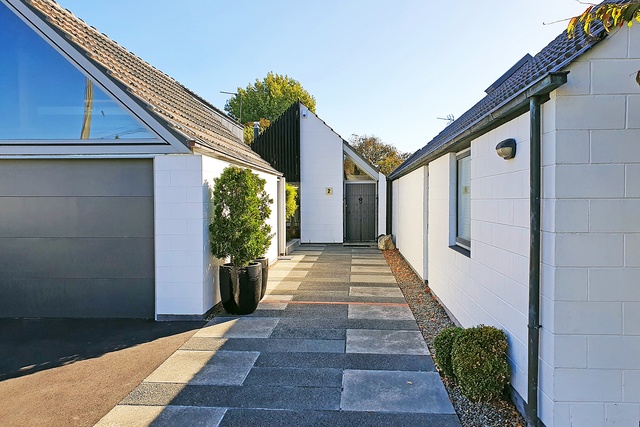
The huge loss of domestic architecture in the 2011 Canterbury earthquake sequence led the jury to reflect on the importance of recognising a specific mid-century Canterbury architectural style for the Enduring Award.
The Schneideman House was designed by Sir Miles Warren in 1966 for Mr and Mrs A J Schneideman. As Sir Miles noted, this particular mid-century modern design harked back to the early New Zealand cottage and, for a time, was a trademark of his mid-century houses in Canterbury.
The house is comprised of three steeply gabled wings – service, living and bedrooms. The starkness of the block structure is warmed by timber interior features and areas of parquet flooring. Full-length windows in the living areas provide a direct relationship with the foliage of the garden. A blank gabled wing elegantly and simply addresses the street frontage, typifying the clean-cut lines of architectural expression in mid-century modern architecture. Inside, little has changed other than the utilities, which have been updated sympathetically within the home’s original footprint. The Schneideman House has been carefully maintained over time and is testament to a timeless domestic design that is as relevant today as it was 55 years ago.
Heritage
The Public Trust Building by Three Sixty Architecture
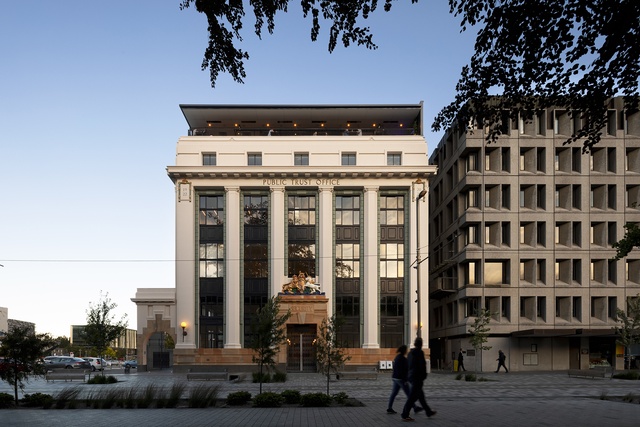
The Public Trust building was designed by Christchurch architect Cecil Wood in 1922 and opened in 1925. The principal façade was designed to represent permanence, stability, and security; its stripped, neoclassical style was common internationally for such government buildings. Badly damaged in the Canterbury earthquakes, it was in danger of demolition until the current owners purchased it for restoration in 2017. Installing new uses in heritage buildings is not always an easy task, but in this case has been undertaken with respect and sympathy, including the addition of a rooftop bar, discreetly set back from the upper parapet. This heritage building is now a rare survivor of its type in the central city and has been carefully and meticulously conserved and restored.
Hospitality
Eruption Brewery by Bull O’Sullivan Architecture
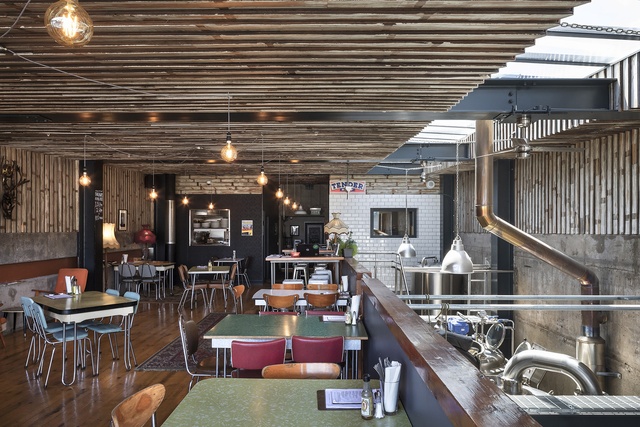
This clever adaptation of an original bank building into a microbrewery has provided a relaxing place to meet and brought a “little bit of New Orleans” to Lyttelton. Nestled on a steep site, and opening onto the harbour and the vibrant London Street frontage, Eruption Brewery is now a landmark contribution to the urban life of Lyttelton. Existing bank rooms have been repurposed into functional customer spaces with a visual connection to open-plan brewing facilities and the street. As a consideration to the environmental impacts of the build, the existing building fabric was preserved where possible, and salvaged timber was used to clad interior spaces.
Muse (formerly CBS Building) by Three Sixty Architecture
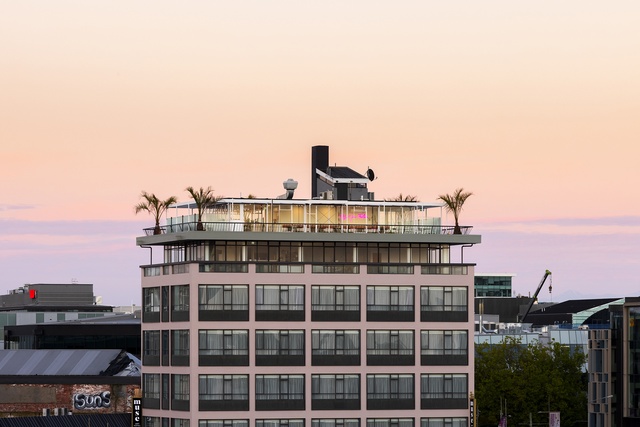
Formerly the Canterbury Building Society Building, designed in 1961 by the late Peter Beavan, this former office building needed to be made safe via seismic strengthening, and repurposed as a hotel. The resulting structural upgrade has been secreted into the interior fit-out, allowing several original features of the form and layout to be retained. The exterior heritage and fabric of the building has remained intact, and the addition of a rooftop bar now affords some of the best views of the city.
Interior Architecture
Spark Square by Sheppard & Rout Architects
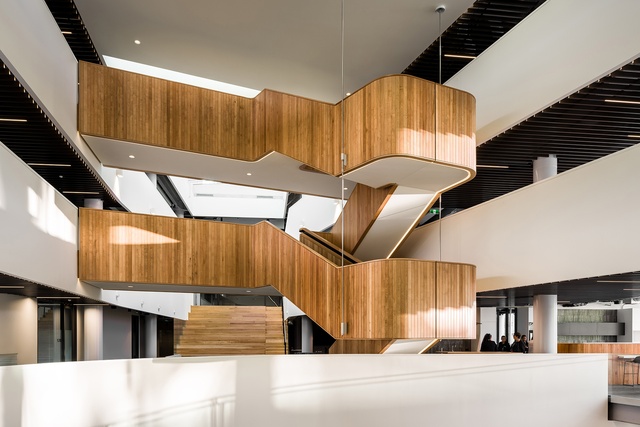
The metaphor of connectivity is clearly on display in this interior for a telecommunications company. From the central atrium of this purpose-designed building, an appealing stairway spirals upwards to link the floors and draw users away from using lifts, both for reasons of public health and energy efficiency. The sinuous white balustrade provides a thread of cohesion in a workspace designed to facilitate more agile and responsive working habits. Exposed services contrast with warm cherry beech on the atrium stairs, and the glowing, oak-lined social stair atrium encourages staff to meet and linger.
Public Architecture
He Puna Taimoana by AW Architects and Select Contracts
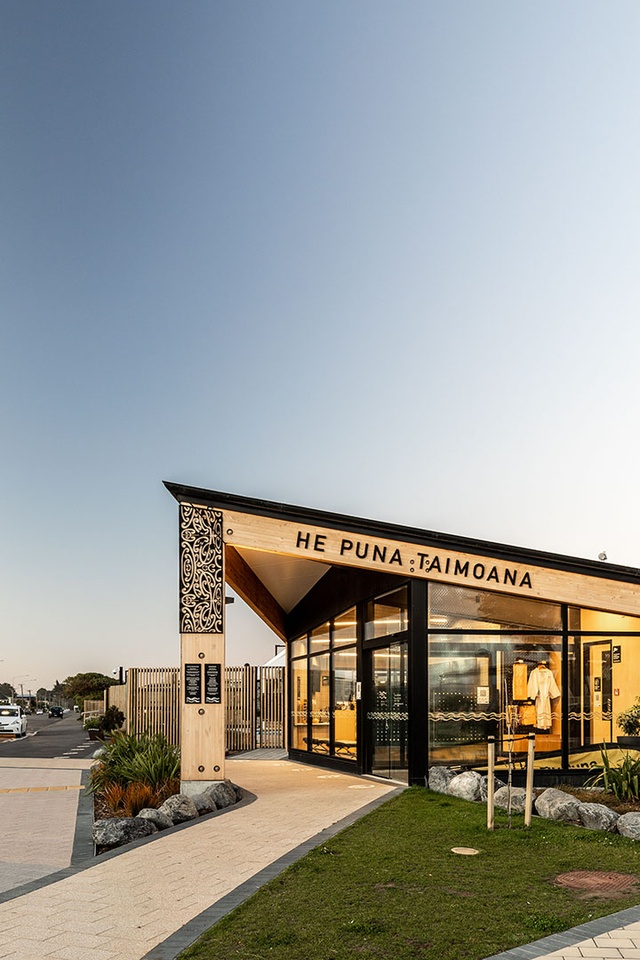
The He Puna Taimoana development in New Brighton consists of five hot pools, a plunge pool, sauna, steam room and an enclosed relaxation area. It is conceived as a careful reconciliation between the dynamic nature of the ocean and the stillness of man-made forms. That tension and balance is translated through the architectural and sculptural forming of the landscape, pools and buildings. The site is terraced to provide shelter from the prevailing wind, while the built forms “wrap, crack and push out” to create shelter and shade. The materials palette is a clear and effective response to the changeable weather and landscape conditions.
Majestic on Durham by Sheppard & Rout Architects
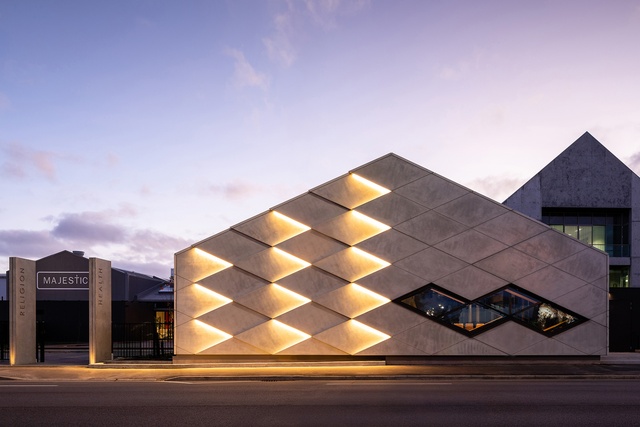
The Majestic Church has a history of breathing life into pre-existing buildings and its new home in a former industrial complex continues its contribution to enhancing the city’s urban fabric. The Durham Street elevation features diamond-shaped GRC scales and eyelike windows that give the building an animated look. The arrival courtyard, glazed circulation spaces and main auditorium all retain the materials, features and texture of the industrial past, but provide a welcoming spiritual home for both visitors and congregants.
Waipapa Christchurch Hospital (formerly known as Christchurch Acute Services Building) by Chow:Hill Architects, Warren and Mahoney Architects and Thinc Health
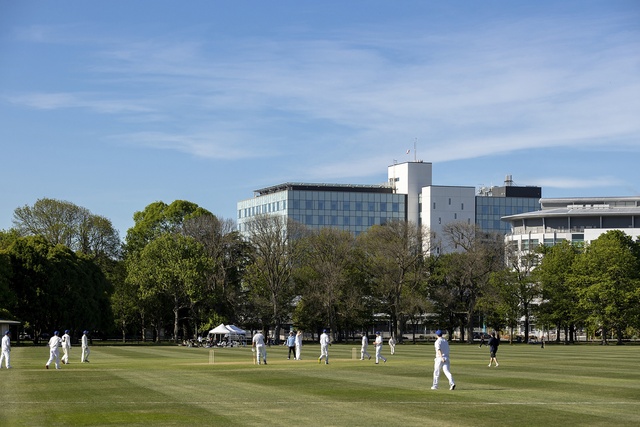
The new acute services building annexed to Christchurch Hospital reinvents the notion of a hospital space. Gone are disorientating corridors and inwardly focused rooms - here, the hallways are wide and generously connected to views across Hagley Park, and patient beds are oriented towards large picture windows. This sense of light and air enlivens treatment spaces, invigorates work spaces and contributes to this facility’s mission to place wellbeing at its core. Visitor and family areas and a multi-denominational space provide a caring sanctuary at the heart of this resilient and future-proofed new hospital wing.
Taylors Mistake Surf Lifesaving Club Pavilion by Wilson & Hill Architects
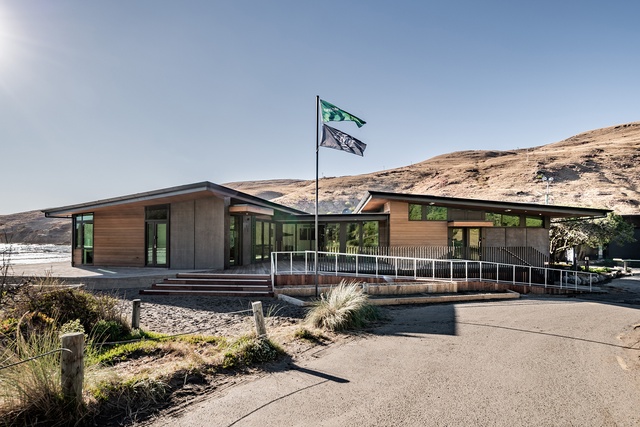
This new Surf Lifesaving Pavilion attaches itself to an existing concrete plinth that provides a physical and social anchor for the club. A shed, set back into the sandhill, stores lifesaving gear and surfboards, while the pavilion accommodates the club’s observation space, search-and-rescue operations, and training activities within a robust and familiar materiality. Overlooked by hillside neighbours, these separate forms, built using contrasting construction solutions, provide a scale and palette in harmony with the beachfront.
Small Project Architecture
Musterers Hut by C Nott Architects
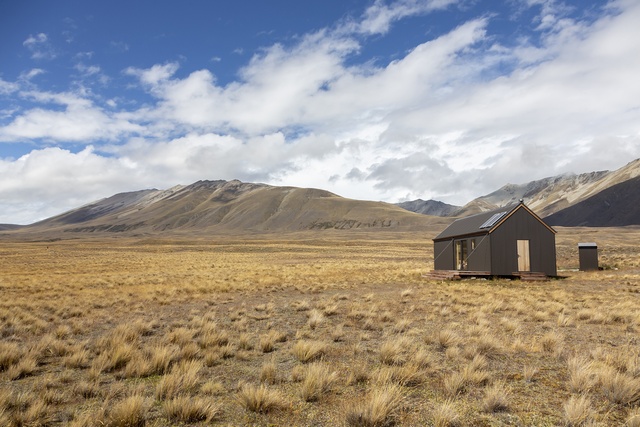
Set at the top of the world under a wide, sheltering sky, this completely off-grid accommodation has been constructed in the form of a traditional musterer’s hut. Attention to design detail, use of a recessive colour palette and low reflectivity of materials enables this small build to sit unobtrusively amid its surroundings. Precise design decisions and fine workmanship – chamfered edges, mitred corners, a chimney that emulates the corrugated iron settler hut, a composting long-drop toilet – make this project a fitting companion to its landscape and a respectful ancestor of its New Zealand high-country forebears.
The Drawing Room by Pac Studio
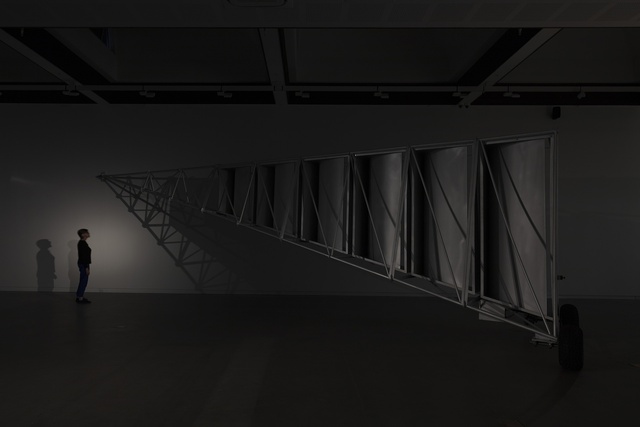
This exquisite installation occupied the upper floor of the Centre of Contemporary Art Toi Moroki until February 2021. The piece used both the physical space of the gallery and the digital spaces of film and VR to challenge our notions of what architecture is and what it could be. This rewarding and thought-provoking exhibition bridges the gap between academia and practice, and allows spectators to join the dialogue between theory and built reality.
The NZIA Local Awards 2021 programme is supported by Resene and APL.

